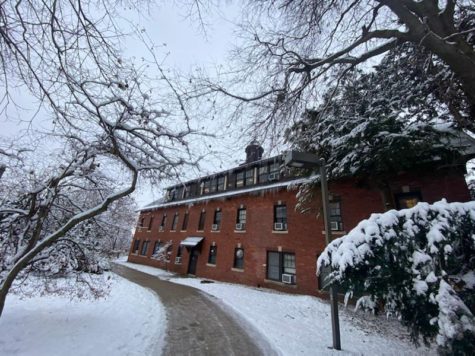A festivus for the rest of us
December 1, 2010
During the holiday season, one of the most common symbols is the Christmas tree. The Christmas tree represents fertility, Hector Avalos, professor of philosophy and religious studies, said. “It is a symbol that life remains even in the dead of winter.”
Now imagine your holiday celebration without the tree. Instead you have an aluminum pole. This isn’t just any pole, it’s a Festivus Pole.
Festivus Pole
As strange as it sounds, the aluminum pole is a symbol for the secular holiday of Festivus, which was invented by writer Dan O’Keefe. The holiday is celebrated Dec. 23, and was introduced to society in a television episode of “Seinfeld.” O’Keefe’s son, Daniel, was a writer for the show.
The aluminum pole replaces the tree, and typically is not decorated.
What is Festivus?
Festivus has its own traditions and activities, which include the Airing of Grievances. This usually occurs at the Festivus feast. Guests tell their friends and family about the ways in which they disappointed them in the past year.
Although it’s not a common holiday, there are people who celebrate Festivus. In “Seinfeld,” Festivus is described as a way to celebrate the holiday season without the commercialization of Christmas.
In our society Christmas has become more and more commercialized. “It’s lost some of its religious appeal and become more consumer and family-orientated,” Avalos said.
The celebration of Christmas all depends on the individual. “There is a spectrum within religious people,” Avalos said. “Some really do celebrate the birth of Christ, and for others, the religious or church-aspect of the holiday isn’t the biggest thing.”
Religious Santa?
Many of the symbols or traditions of Christmas have been imported from other countries and traditions over time, including the Christmas tree, the image of Santa Claus and those “classic” Christmas songs.
For example, Avalos said that the historical figure of Santa Claus was a Turkish bishop, which explains the red color of his robes. When the idea of Santa Claus traveled to Europe, he was transformed into a wood dweller or elf that brought you gifts. His image shifted even more when he was imported into the United States. “In the 1840’s ‘Twas the Night Before Christmas Poem,’ Santa was a elf who went down chimneys. He was a smaller figure, but he’s gotten bigger and bigger with commercialization,” Avalos said.
Due to the cultural aspect of the holiday, non-religious people will celebrate Christmas in different ways. He said some grew up in Christian homes.
“Some think there should be no celebration of Christmas at all. Others retain the cultural part of Christmas, but don’t recognize the holiday as the birth of Christ,” Avalos said.
















